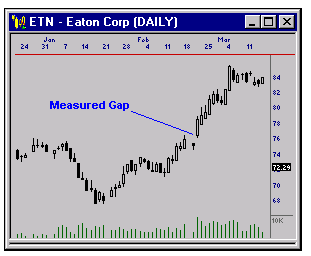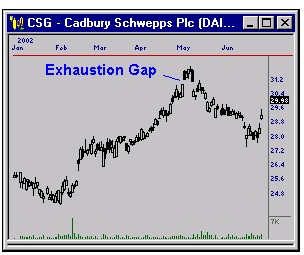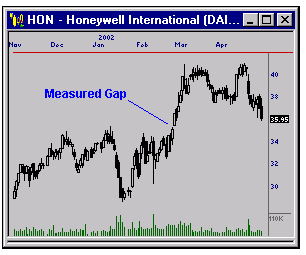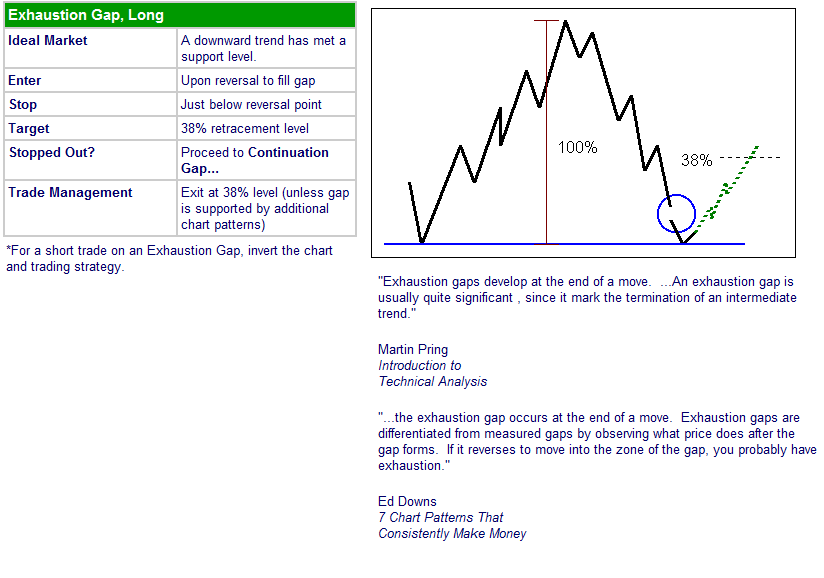Identifiable Patterns After Confirmation MoveThere are the three types of gaps that are of relevance to investors - the breakaway gap, the measured (or continuation) gap, and the exhaustion gap. It is important to discuss the measured gap and exhaustion gap at the same time. Why? Because it is difficult to tell one from the other until after the fact. A measured gap occurs when a security has been in a trend, then gaps in the direction of the trend, and then it continues its move. This explains the continuation gap name. But why is it also referred to as a measured gap? Because this behaviour often occurs at 50% of the total move. In other words, it is 'measuring' the halfway point of the total move. However, there are times when a security will gap in the direction of the trend, but then reverse and move the other direction. This is known as an exhaustion gap. Just as a measured gap is a sign of a continuation move, an exhaustion gap is a sign of a reversal. The problem is that often times these gaps when these gaps occur, it is difficult which one of these two gaps it is. The solution is not a popular answer, but the right one. It is important to wait for price action to confirm which type of gap we are looking at. If price continues in the direction of the trend, we are most likely looking at a measured gap. However, if price reverses we have witnessed an exhaustion gap. Both of these gaps are good indications of
future movement. While the fact that we have to wait for the
move after the gap for confirmation may seem difficult to those
of us lacking patience, it often proves to be the profitable
move. |

Eaton Corp gaps during the trend and then continues its
upward move

CSG falls after the gap, giving us a good example of an
exhaustion gap

Honeywell International's measured gap marks the 50%
point of the complete upward move
|

